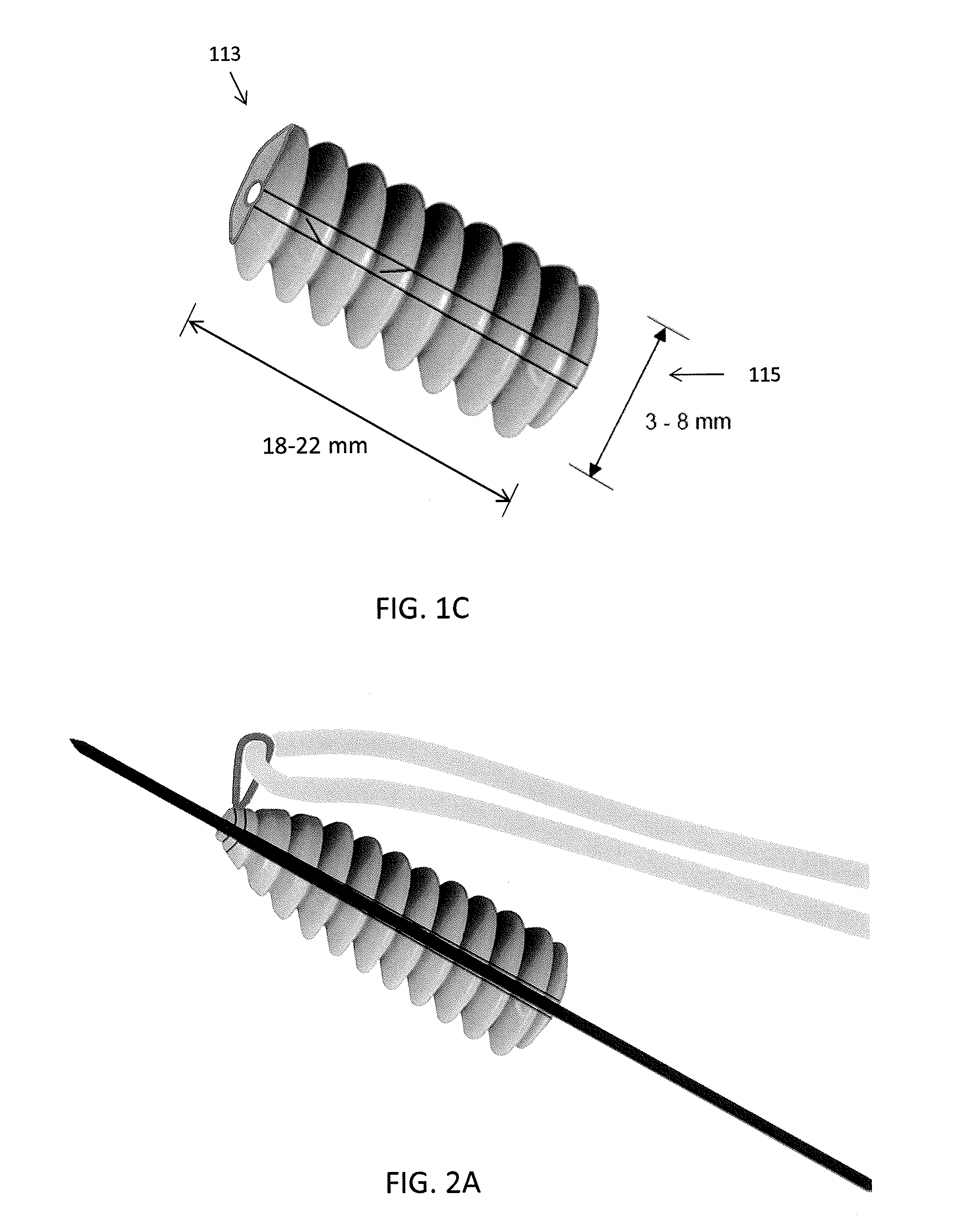Transosteal anchoring methods for tissue repair
a tissue repair and transosteal technology, applied in the field of transosteal anchoring methods for tissue repair, can solve the problems of long surgical time, painful and debilitating tear of anterior cruciate ligaments, and ineffective merely sewing of torn acls
- Summary
- Abstract
- Description
- Claims
- Application Information
AI Technical Summary
Benefits of technology
Problems solved by technology
Method used
Image
Examples
example 1
Method of Repairing ACL
[0083]In set of examples of transosteal methods as described herein are methods of repairing a torn ACL. These methods may include anchoring one end of an anchor (which may include a graft or scaffold) in the femoral notch, for example, by securing an anchor in the femur at the attachment site of the ACL to the bone in the femoral notch. The anchor may hold one end of a flexible scaffold for attaching to the patient's ACL. The scaffold may be a graft, sleeve, patch, or the like. The step of anchoring may include anchoring a scaffold (e.g., graft) using an ACL graft anchor such as those described above. The scaffold may be secured by first driving a pin (e.g., a beath pin) though the posterolateral femoral arch, and drilling an opening into which the ACL graft anchor may sit. In some variations a second tunnel or passage for the graft, adjacent to the first, may also be formed. An ACL graft anchor with an attached ACL scaffold may then be secured into the openi...
example 2
Tibial-Sided Transosteal Anchor for Meniscal Root Repair
[0109]In some variation, the methods and apparatuses described herein may be used to treat a torn meniscal root. For example, the meniscal root may be repaired as described above by forming a transosteal tunnel through the tibia (e.g., to the tibial plateau) and repairing the meniscal root by suturing the torn end of the root and securing it to an anchor held in tunnel near (e.g., adjacent) to the tibial plateau.
[0110]It is well-known in the art that repair of the meniscal root is both desirable and highly difficult. For any patient, even “ideal” young and highly active candidates, meniscal repair continues to represent a significant challenge. It is undisputed that vertical tears greater than 1 cm in the peripheral-third of the meniscus should be repaired, however, there has been new attention on repairing posterior root tears. With these root tear repairs, an inside-out repair is not feasible due to the posterior midline plac...
PUM
 Login to View More
Login to View More Abstract
Description
Claims
Application Information
 Login to View More
Login to View More - R&D
- Intellectual Property
- Life Sciences
- Materials
- Tech Scout
- Unparalleled Data Quality
- Higher Quality Content
- 60% Fewer Hallucinations
Browse by: Latest US Patents, China's latest patents, Technical Efficacy Thesaurus, Application Domain, Technology Topic, Popular Technical Reports.
© 2025 PatSnap. All rights reserved.Legal|Privacy policy|Modern Slavery Act Transparency Statement|Sitemap|About US| Contact US: help@patsnap.com



